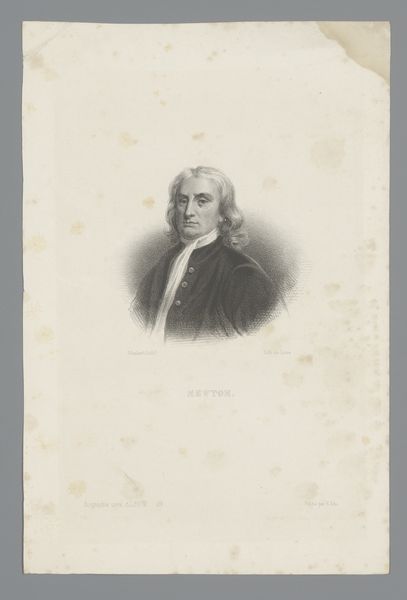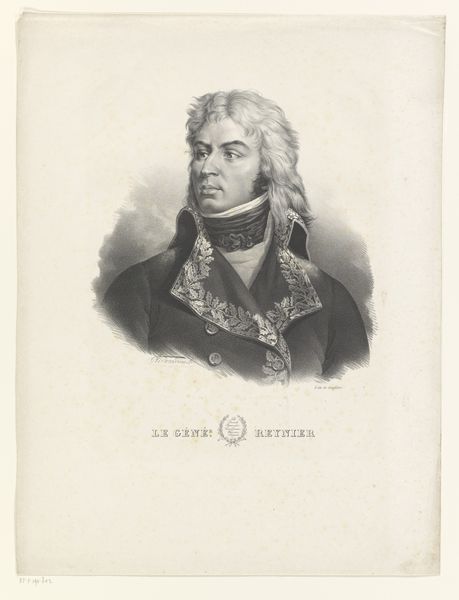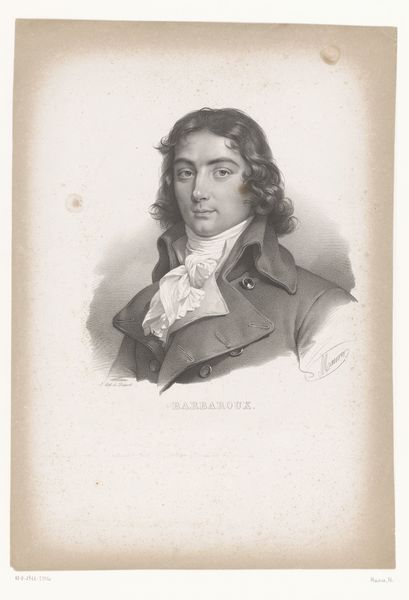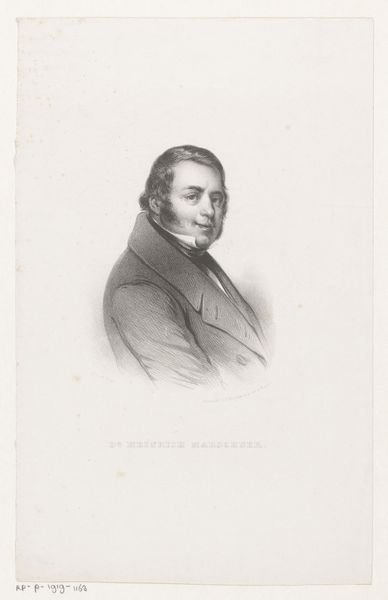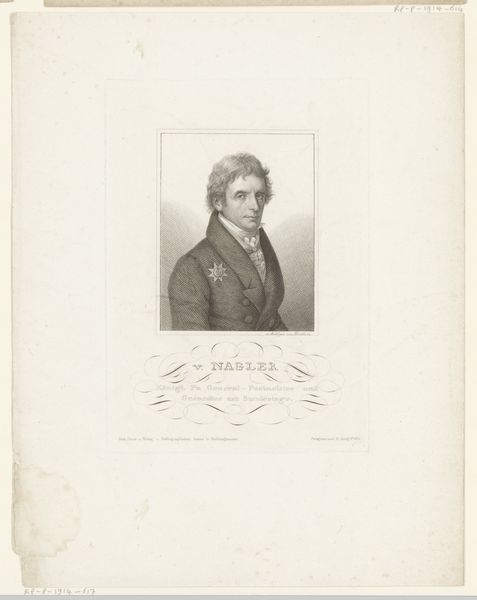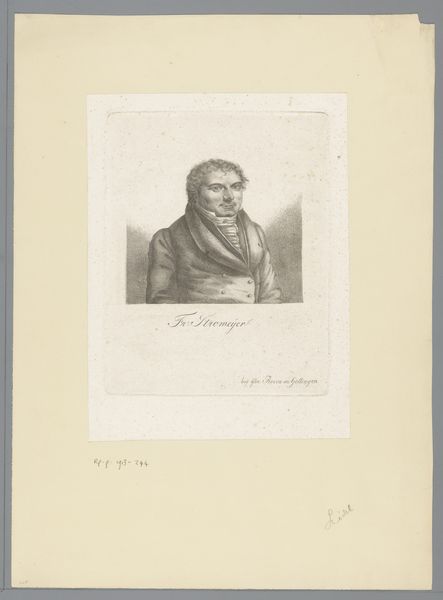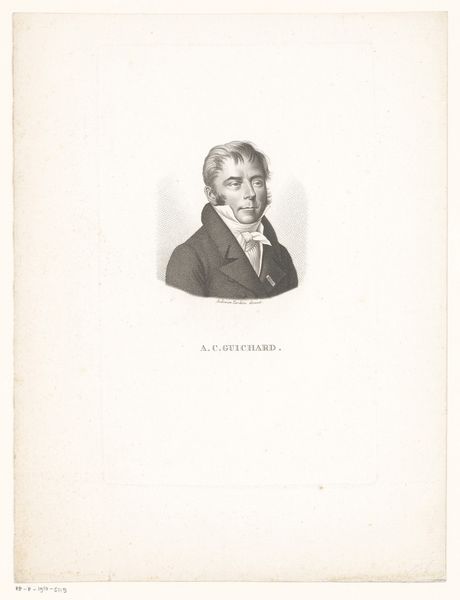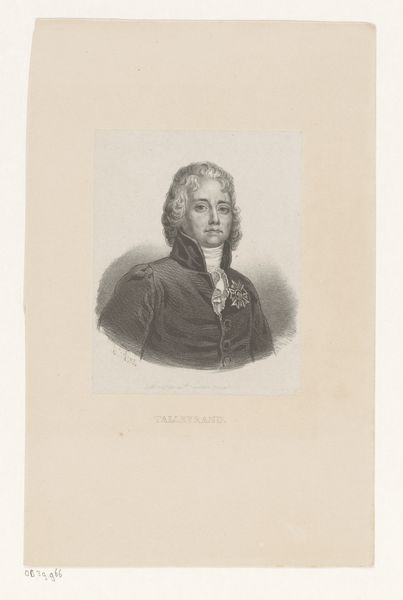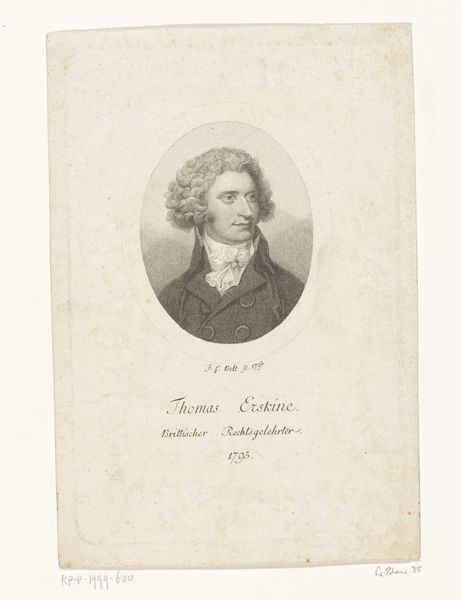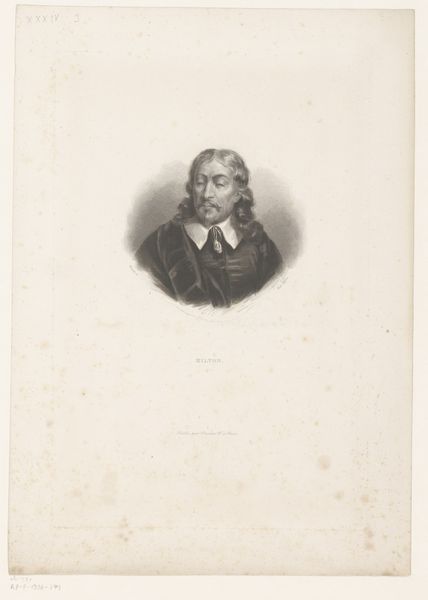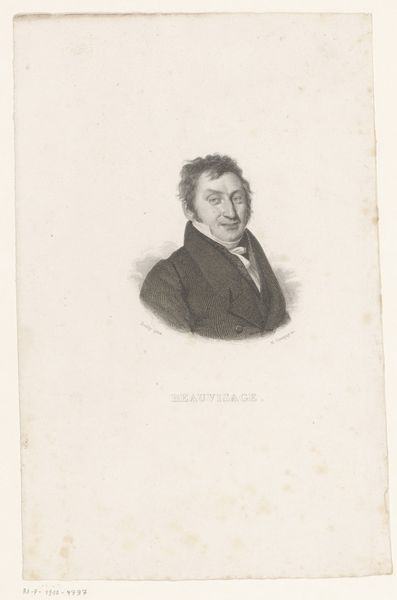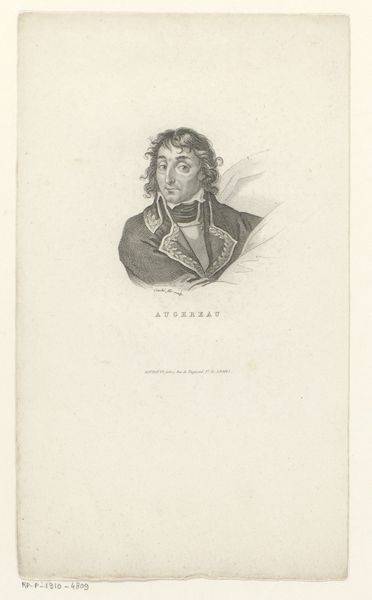
Portret van Karel XIV Johan, koning van Zweden en Noorwegen after 1847
0:00
0:00
print, engraving
#
portrait
#
16_19th-century
# print
#
history-painting
#
engraving
#
realism
Dimensions: height 274 mm, width 181 mm
Copyright: Rijks Museum: Open Domain
Curator: Looking at this engraving, created after 1847 by Joseph Schubert, you’ll see it’s titled “Portret van Karel XIV Johan, koning van Zweden en Noorwegen.” Or, a portrait of Charles XIV John, King of Sweden and Norway. Editor: It has a kind of austere yet romantic feeling. I notice immediately how the face is so carefully detailed compared to the lightly etched jacket, and how that contrast emphasizes his gaze. The expression hints at a steely interiority, almost melancholy. Curator: The portrait aesthetic really served to construct the image of leadership during this era. The sitter is presented with dignity, even regality, designed to communicate authority to the viewer. This was particularly true for royalty with complicated rises to power. Editor: And he had quite a rise, didn't he? It says on the engraving, “Le Général Bernadotte.” Jean-Baptiste Bernadotte – a French general who, almost unbelievably, became King of Sweden. His French background certainly would have been something his image-makers had to contend with. Curator: Absolutely. His visual identity was crucial in legitimizing his reign, considering he wasn't of Swedish origin. The symbols embedded aren’t always explicit – the somber mien, the precisely knotted cravat all point to an era constructing the image of power through portraits and how such symbols worked publicly. Editor: Right. And notice the details of the face—the tiny lines around his eyes. It's quite a direct gaze, meeting the viewer head-on, demanding respect, yet still slightly weary. How interesting it is that such intimate and seemingly personal marks were mobilized as tools to evoke trustworthiness, solidity. Curator: It is the skillful use of engraving which allowed the artist to create this sense of authenticity and command through small details, contributing significantly to its visual weight. What remains interesting for me is the very public performance of an identity – especially during times of political volatility and shifting alliances. Editor: Ultimately, Schubert’s portrait speaks volumes about the power of crafted representation to define a ruler in the public consciousness. One can feel here a cultural memory taking form – an impression designed to outlive the subject himself.
Comments
No comments
Be the first to comment and join the conversation on the ultimate creative platform.
